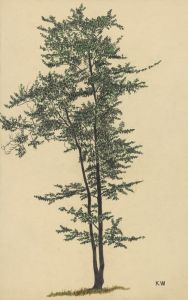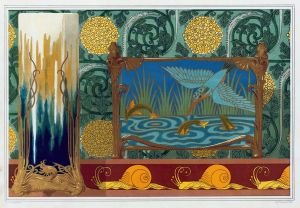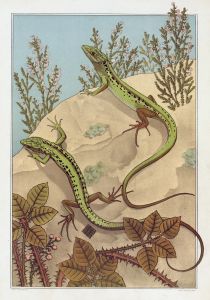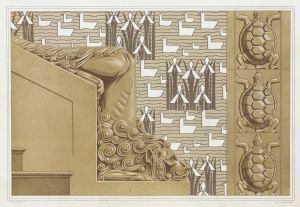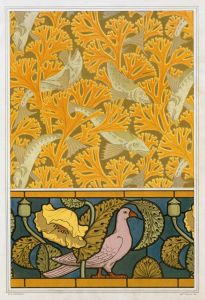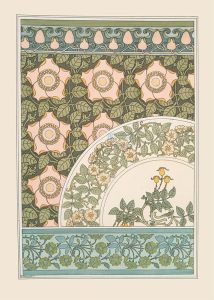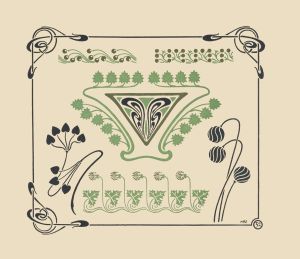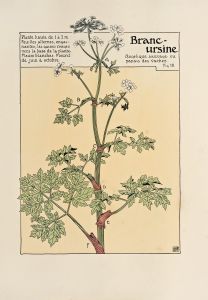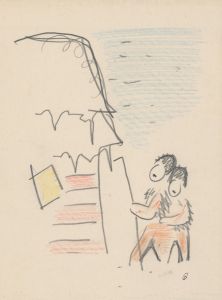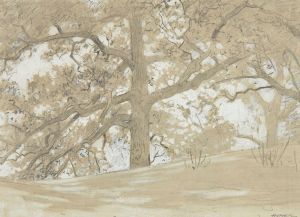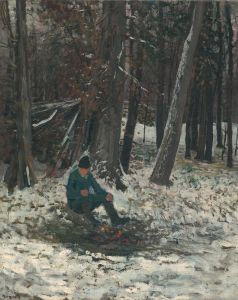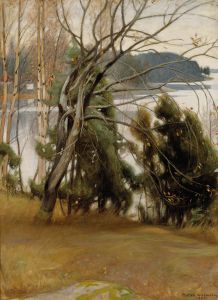
Marronnier 3
A hand-painted replica of Maurice Pillard Verneuil’s masterpiece Marronnier 3, meticulously crafted by professional artists to capture the true essence of the original. Each piece is created with museum-quality canvas and rare mineral pigments, carefully painted by experienced artists with delicate brushstrokes and rich, layered colors to perfectly recreate the texture of the original artwork. Unlike machine-printed reproductions, this hand-painted version brings the painting to life, infused with the artist’s emotions and skill in every stroke. Whether for personal collection or home decoration, it instantly elevates the artistic atmosphere of any space.
Maurice Pillard Verneuil was a prominent French artist and designer known for his contributions to the Art Nouveau movement. Born in 1869, Verneuil's work spanned various mediums, including graphic design, illustration, and interior decoration. One of his notable works is "Marronnier 3," a piece that exemplifies his distinctive style and artistic approach.
"Marronnier 3" is a part of Verneuil's series of botanical illustrations, which were highly regarded for their intricate detail and aesthetic appeal. The title "Marronnier" refers to the horse chestnut tree, a common subject in botanical art due to its distinctive leaves and flowers. Verneuil's depiction of the horse chestnut in "Marronnier 3" showcases his ability to blend scientific accuracy with artistic beauty, a hallmark of the Art Nouveau style.
The Art Nouveau movement, which flourished from the late 19th century to the early 20th century, emphasized organic forms, flowing lines, and natural motifs. Verneuil's work, including "Marronnier 3," is a quintessential example of this movement. His use of curvilinear lines and natural forms reflects the influence of Japanese art and the broader Art Nouveau aesthetic.
In "Marronnier 3," Verneuil captures the essence of the horse chestnut tree with meticulous attention to detail. The composition features the tree's characteristic leaves, flowers, and seed pods, rendered with a sense of movement and vitality. The flowing lines and harmonious composition create a sense of rhythm and balance, drawing the viewer's eye across the piece.
Verneuil's botanical illustrations were not only artistic endeavors but also served an educational purpose. They were often used in publications and design manuals to inspire and educate other artists and designers. His work contributed to the dissemination of the Art Nouveau style and its principles, influencing a generation of artists and designers.
"Marronnier 3" is a testament to Verneuil's skill as both an artist and a designer. His ability to capture the beauty of nature and translate it into a visually compelling composition is evident in this piece. The work reflects his deep understanding of botanical forms and his mastery of the Art Nouveau style.
Maurice Pillard Verneuil's contributions to the Art Nouveau movement and his legacy as an artist are significant. His work, including "Marronnier 3," continues to be appreciated for its beauty, craftsmanship, and historical importance. Verneuil's botanical illustrations remain a valuable part of the Art Nouveau canon, celebrated for their artistic and educational value.
In summary, "Marronnier 3" by Maurice Pillard Verneuil is a notable example of Art Nouveau botanical illustration. The piece exemplifies Verneuil's ability to blend scientific accuracy with artistic beauty, capturing the essence of the horse chestnut tree with intricate detail and flowing lines. Verneuil's work has had a lasting impact on the Art Nouveau movement and continues to be appreciated for its aesthetic and educational contributions.





